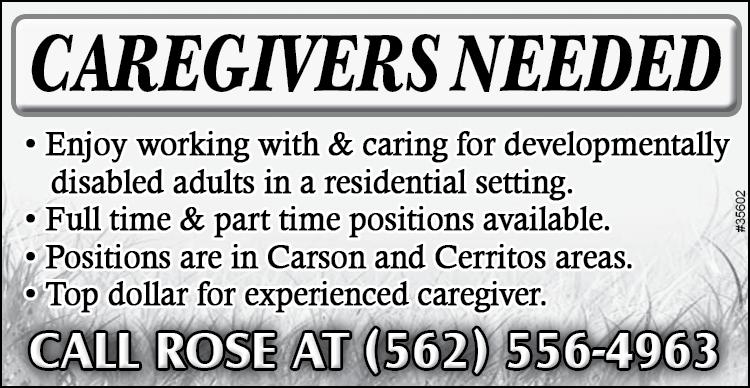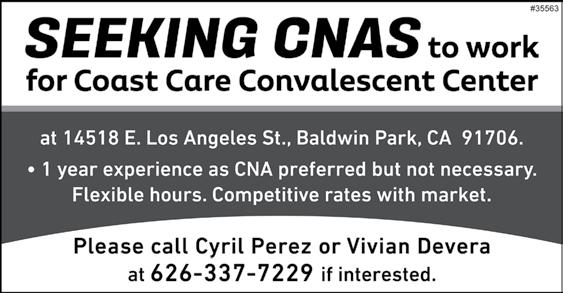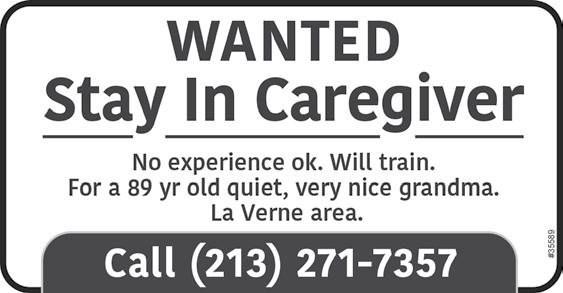
7 minute read
How to look 10 years younger without going under the knife
That’s a good thing!
Are you paid for all hours worked?
Advertisement
Employees lose wages when employers round down or shave work hours
TRUTH be told, Beauty fades. There’s no better way to say this, but we are all going to age and the earlier we embrace the fact that aging is part of being human, the better. While time seems like the “enemy” here, it has also brought us to an era where new technologies have emerged. One of the best things that modern skincare technology has given us is the ability to delay aging.
Before this present time, when people say they are 40 years old, it sounded and looked “old” somehow. But now, people even in their 50s could easily pass for a 30-year old . Same goes true for people in their 60s and 70s they still look good and younger than they actually are.
So when is the right time to start getting treatment done, you ask. You also wonder, “am I too young or too old to start any treatment? These are all valid, life-changing (and skinaltering) questions. But the bottomline is: it’s never too late nor it’s too early for any treatment, especially if you start noticing something that bothers you when you look at the mirror .
In this column, I want to talk about how to look ten years younger. Is this possible ? Yes!
How? You start by getting professional consultation and proper evaluation of your skin.
One of the signature protocol that is available at iSkin and MiSkin that is becoming more and more very popular is our approach on how to look 10 yrs younger. This is what we call the “Sculptra Treatment.” This protocol, restores youthful shape, improves skin texture, and offers natural-looking results. Plus, IT IS long-lasting! It is a facial injectable that works deep within the dermis to help replace lost collagen and gradually restores the look of fullness to areas of the face affected by facial wrinkles and folds. Sculptra is made from Poly-L-lactic acid, a synthetic material that has been used for decades in dissolvable stitches and soft tissue implants. The FDA approved it for use in correcting facial wrinkles in 2009. Collagen stimulators are used to diminish facial wrinkles by helping to restore the deep, underlying structure of the skin. Results appear gradually over the treatment regime (typically three injections over the course of three to four months) and can last up to two years. Since Sculptra is a collagen stimulator, the procedure is literally fertilizing your collagen. So, imagine your collagen growing, which is basically what our skin needs because collagen tends to diminish as we age. Sculptra is designed to bring back that collagen underneath your skin to give you that youthful look. The microparticles of polylactic acid initiate the formation of sheets of collagen under the skin. You will start noticing improvement in four to six weeks and you will see more improvement the next 6 to 25 months – the tightness of the skin improves from temple to jawline area, and you’ll notice more volume, plus there’s an improvement in texture and elasticity. This treatment is something you don’t need to do often yet you’ll see the results after two to four sessions. The best part is that you’ll continue to see improvements over time. What are the benefits of sculptra aesthetic?
Let us breakdown the benefits of this “time-altering” skincare technology.
1. Sculptra restores youthful shape Sculptra restores the fullness and volume of the face. Over time, the people around you may notice that you look fresher, younger, and more radiant, but they won’t be able to put their finger on what it is.
2. Sculptra
Improves Skin Texture
Although Sculptra stimulates the collagen deep within the dermis, the results show up on the surface layers of your skin as well. In addition to the volumizing and plumping effects, you get the glowing tone and smooth texture of youthful skin as well. Great for acne scarring!
3. Sculptra offers naturallooking results
Some injectables work to relax the muscles causing the wrinkles in your face to soften. Others diminish lines and wrinkles by filling in the space. Sculptra works gradually to stimulate your own body’s collagen production, resulting in a natural, more beautiful and youthful-looking you!
4. Sculptra is exceptionally long-lasting Studies have shown that the majority of cosmetic patients would choose duration over immediacy when it comes to injectable filler treatments. With Sculptra, you get exactly that. Though other fillers may provide immediate results, they need to be injected every 6-12 months to maintain preferred results. Sculptra works gradually. You may see some improvements within the first few weeks of treatment, but optimal, long-lasting effects develop after an average of 3 sessions spaced a month or so apart. A full treatment of Sculptra provides.
You may do your own research and read about the benefits of Sculptra to educate yourself more, but before you consider this procedure, I recommend you get a free consultation first. Remember: getting a good evaluation and understanding your needs and your skin goals is very essential. And make sure you consult with providers who are well trained and experienced. ISkin and MiSkin Med Spa ’s expertise is how to look 10 years younger. Sculptra is definitely one of the product we
Protecting Employee & Consumer Rights
Atty. C. Joe SAyAS, Jr
MOISES Negrete worked at Conagra Foods, Inc.’s food processing facilities located all over California. Moises and other workers sued their employer in a class action, alleging failure to provide them lawful meal and rest periods but automatically deducting time for meal periods, even when employees did not take a meal break. Employees also alleged employer failure to pay correct wages due to improper rounding of employees’ clock-in and clock-out times; and failure to pay for the offthe-clock time employees spent putting on and removing protective gear as required by the employer. Under California law, employees must be paid for all hours worked. When time entries reflect that an employee is on the job a few minutes more than the shift time, questions arise as to computation of the work hours. Federal law allows “rounding” employee’s hours to calculate the number of hours worked. Following the de minimis doctrine, any insubstantial period of time beyond the scheduled working hours (for example 5 minutes of going through a bag check) may be disregarded. Such time may be rounded out to the nearest 5 minutes of the employee’s start or end time.

In contrast, California law mandates that employees should be paid “for all hours worked.” Hours worked means “the time during which an employee is subject to the control of an employer, and includes all the time the employee is suffered or permitted to work, whether or not required to do so.”
Related to the principle of compensating employees for all time worked, is the concern that small amounts of time that may, over the years, add up. Thus, courts may decide that the de minimis doctrine does not apply if employees regularly spend anywhere from 4 to10 minutes of their time each shift doing unpaid work. Rounding down or shaving minutes off the actual hours worked violates California law.
In a rounding down practice where several minutes are disregarded and unpaid, the loss to the employee may add up. An employee who clocks in an extra 5 minutes per day, 5 days a week, every week for 4 years has clocked in 5,200 minutes (or 86.67 hours) of unpaid time, which when paid at the California minimum wage of $15.50 per hour, entitles the employee to back wages in the amount of $1,343.39.. This is not de minimis. This is enough to pay a utility bill, buy weeks of groceries, or cover bus fares [or help cover a monthly apartment rental].
“more than five hours per day” or “more than 10 hours per day” without being provided with a meal period. Under the law, meal break violations against an employee can occur if the employee 1) was not provided an actual break; 2) was prevented from taking the break within the first 5 hours of work; 3) was interrupted by work during break; or 4) took a shortened break, as the case here. If any of these violations occur, the employee should be paid an additional one hour at their regular hourly rate.
Though an extra couple of minutes here and there that are beyond the work hours may be unavoidable and can be disregarded, major discrepancies should be investigated since they raise doubts on the accuracy of the records of actual hours worked.
The same strict adherence to the law is required by meal and rest periods.
California law sets precise time requirements for meal periods. Each meal period must be “not less than 30 minutes,” and no employee shall work
As to rest breaks, an employer must authorize and permit all employees to take at least 10-minute rest breaks, for work of every our (4) hours or major fraction thereof. The ten minutes must be consecutive, and the rest period must be “duty-free.” Where an employee is not provided any of their 10-minute rest period, the employee should be paid an additional one hour at their regular hourly rate. Rather than proceed to trial, the parties reached a settlement where the employer will pay a gross settlement amount of $18 million to benefit approximately 8,200 food-processing workers in California * * *
The opinions, beliefs and viewpoints expressed by the author do not necessarily reflect the opinions, beliefs and viewpoints of the Asian Journal, its management, editorial board and staff.
* * * The Law Offices of C. Joe Sayas, Jr. welcomes inquiries about this topic. All inquiries are confidential and at nocost. You can contact the office at (818) 291-0088 or visit www.joesayaslaw. com. [For more than 25 years, C. Joe Sayas, Jr., Esq. successfully recovered wages and other monetary damages for thousands of employees and consumers. He was named Top Labor & Employment Attorney in California by the Daily Journal, selected as Super Lawyer by the Los Angeles Magazine for 11 years, and is a past Presidential Awardee for Outstanding Filipino Overseas.]

(Advertising Supplement)












